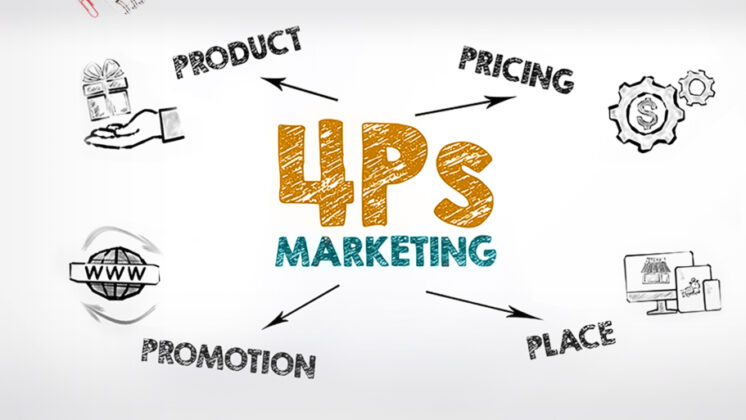Marketing: Reaching Your Target
Every company works hard to get its products into the hands of customers. Are you doing everything you can to compete? In this course, you’ll find a winning formula to turn a product idea into real sales. Follow along through the fundamentals of the marketing mix and see how companies successfully bring products to market.
One minute, you’re scrolling through luscious chocolate Instagram posts, and the next you’re walking back to the office with a Starbucks s’mores latte in hand. How did that happen?
In a word, marketing.
Marketing may have a salesy image, but promotion is just one part (the last part, in fact) of the long product journey from concept to market. Before a product hits the shelves, whether physically or virtually, a lot of work goes into analyzing, researching, and targeting.
Every company has three wishes for their product or service:
- People will hear about it.
- People will want it.
- People will buy it.
To ensure those three things happen, marketers need strategy. Most use something called the “marketing mix.”
The Marketing Mix (a.k.a. The 4Ps of Marketing)
After product research is finished, a company will move on to the “marketing mix,” otherwise known as the 4Ps of marketing:
- Product
- Price
- Place
- Promotion
Essentially, this is Marketing 101: map out where you are and where you’re going to make sure you’re on the road to success.
Let’s say, for example, you work for a kitchenware company and have an amazing idea for a travel cutlery set—fork, knife, spoon, chopsticks, the whole shebang. And with the World Travel & Tourism Council projecting prepandemic levels of tourism in the US in 2022, this could be the perfect timing to add to your company’s product line.
You start with the product.

The Product
When considering a new product, you first need to put yourself in your customers’ shoes. Ask yourself two questions:
- What problem does my product solve?
- What value does my product offer?
Have you ever experienced the sadness of an ice cream cup without a spoon? What about losing the tines on a plastic fork one by one as you eat a salad? Or a lack of knives in the office kitchen to cut the cake for your coworker’s birthday?
A travel utensil kit solves all of these issues, while also offering the eco-friendly value of being reusable. The problems to solve are there. Next, your kitchenware company, in its market research, would look into whether eco-friendly products appeal to your customer base and whether a travel set is worth the production investment.
Not every product idea has to be new. Some products can stay the same for years and never lose their appeal (like Murphy Oil Soap or LEGO), but most companies will think of how a product can be altered or upgraded to boost sales. The first launch of your cutlery kit may be a conservative 1,000 units to test the waters in one color and material. But after a few months, you can use solid user data and feedback to determine demand for more personalized kits or preferred materials.
What to Watch Out For
Everything is going great with the first P of your marketing mix, and the cutlery kits are flying off the shelves. But suddenly you notice a steady dip in sales with another product: your bento boxes.
It turns out, people loved the chopstick design in the bento box, but now they can get the exact same ones in the cutlery kit. Your own products are competing with each other—a situation called “product cannibalization.”
Product cannibalization happens with companies big and small, old and new. For example, Apple noticed a decline in iPad sales when they increased the size of their iPhone screens. Suddenly, people didn’t feel the need to buy a second device when they could easily read and watch content on their smartphones.
To solve your chopstick conundrum, you could make some adjustments for better differentiation. The ones in your cutlery kit, for example, might still be well designed, but have a different style to the ones included with the bento box. Or perhaps you could collaborate with a famous brand to raise the overall appeal of your bento boxes.
The Price
Once you confirm product demand, it’s time to move onto the next P of the marketing mix and set a price. This is trickier than it might seem. Again, you can start with two questions:
- What price is my customer willing and able to pay?
- How is the competition priced?
Price too low, and you’ll be losing money on production costs. But price too high, and you’ll scare customers away.
This is where your market research comes into play. Look at your customer demographics to understand their disposable income, interest in causes like sustainability (are they really willing to pay 20% more for bamboo or cypress chopsticks?), and location.
Then you’ll want to look at what pricing competitors have set. Should you match them, or can you justify a higher price point? Yes, maybe the cutlery kit off eBay is cheaper, but the quality is questionable, it’s not made locally, and the materials aren’t BPA free.
All of these considerations should factor into price. And just like with your product, be ready to make adjustments based on user data.
Next Article
True or False: You’re Ready for a Digital Marketing Future
This Is Marketing: Seth Godin’s Best Seller Teaches Us How to See and Be Seen
The Place
The third P of the marketing mix is place. This is a multi-pronged issue, but here are the most immediate questions when it comes to placing a product:
- Where are my customers?
- How do I get my product from the factory into their hands?
Nowadays, the latter is a bigger issue than ever.
In 2020 and 2021, everyone and their grandmother experienced problems with distribution channels. Choosing whether to manufacture your product in-house or to depend on outside suppliers is an import decision that impacts your product’s journey every step of the way.
Ideally, you’ll want as few steps as possible between you and your customer. However a narrow channel with less intermediaries puts a lot of pressure on you in house. It’s great to see orders come flooding in, but can your team of five really handle a sudden bulk order of five hundred cutlery kits? What if there is a supply chain issue with the specific type of bamboo you need? Can you handle price fluctuations, or is that better left to a third party?
A wider channel means your company is more robust. You’d be able to handle sudden changes thanks to multiple supply and distribution options—even if it does cut into your profit margin.
There’s no one right answer here, but there’s likely a right answer for your company and product. Consider all your options before diving in. And again, don’t forget to keep an eye on the data.
The Promotion
Finally, your travel cutlery kits are ready to hit the shelves! But they’re next to all the other travel forks and knives, and you only have a handful of product reviews online. You want to get the word out to potential customers, but how?
Marketing: Reaching Your Target
Every company works hard to get its products into the hands of customers. Are you doing everything you can to compete? In this course, you’ll find a winning formula to turn a product idea into real sales. Follow along through the fundamentals of the marketing mix and see how companies successfully bring products to market.
When it comes to advertising, there are two important decisions you (or your marketing team) need to make:
- What is the medium?
- What is the message?
The Medium of Promotion
The medium is the platform or method which best suits your customer demographic. Are they Gen Zers who spend hours scrolling through TikTok? Or are they Gen X adults who still like browsing Facebook and making Pinterest boards?
There’s nothing worse than wasting a big marketing budget on the wrong platform, so make sure you’re putting your money on the right medium.
The Message of Promotion
Your message is how you convey the value of your product to customers in words. These days, much of that is done through social media, but there is a lot of competition online and of a very short window of visibility in the endless scroll. In 2019, Forbes reported that people’s attention spans had decreased from twelve to eight seconds since a 2000 Microsoft study.
That means getting the tone and content of your messaging right is key.
People don’t like being “sold at.” So instead, to promote your cutlery kit maybe you decide that partnering with a wellness YouTuber is the best way to go. Her subscribers match your target demographics, and she makes visually appealing meals. The content can easily be tailored to the right platform (images for Pinterest, videos for Facebook and Instagram, etc.).
Crafting the right message for the right platform can make all the difference between achieving a return on your promotion investment and hearing nothing but crickets.
Plan Your Marketing Mix, But Be Adaptable
Launching a product comes with huge investment and risk, so while planning the 4Ps can get tedious at times, it’s worth it to do your research and strategize. Luckily, unless you’re a team of one, mapping out the marketing mix can easily be a team effort.
Share the workload. Get different perspectives.
The last thing to keep in mind is this: Be adaptable. While the 4Ps of marketing can help you plan out what needs to be done, there no way to know how a product will be received until it hits the market. Modern marketing is fickle. Online trends changes from day to day.
Always be ready to adjust and remix your marketing accordingly.





